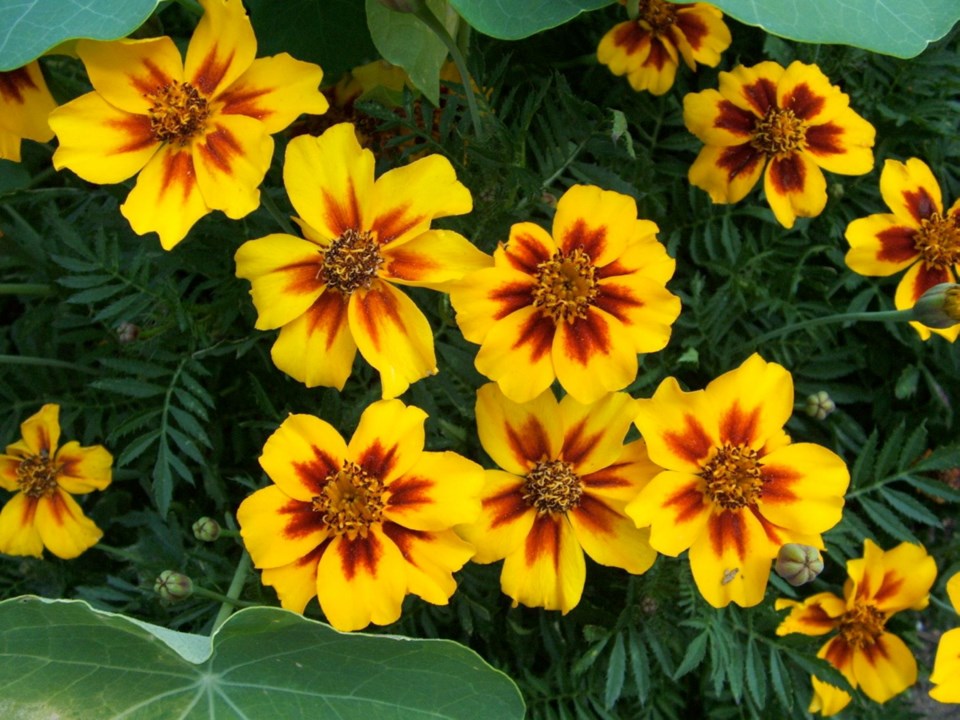Dear Helen: The space I have available for gardening is woefully inadequate for the vegetables, herbs and flowers I want to grow. I’m sure this is a common problem for many gardeners looking for helpful ideas on space efficiency.
F.G.
Space availability for gardening is in increasingly frustrating issue for aspiring gardeners. We’ve come a long way from the days of (some of) our childhoods, when almost every home had a yard spacious enough for a family vegetable garden, a patch of raspberry canes, rhubarb plants, and a few fruit trees. Still, veteran small-space gardeners manage to grow a surprising abundance of food and flowers in confined spaces. Here are some tips to consider.
• Select carefully. Assess the space available against a list of most desired plantings. Plot out where each planting could fit into the space, and eliminate some if necessary or choose some on the list for growing in containers. Give priority to edibles that are best enjoyed fresh from the garden, such as lettuces and other leafy salad greens.
• Block planting. Instead of seeding and transplanting in individual rows, grow in blocks of closely spaced plants. For convenience, make sure the middle of a block planting is easy to access from its edge. I keep block plantings to a width of 120 cm across. Root vegetables spaced closely in blocks, and bush beans, are among the most space-efficient, high-yielding plantings.
• Soil. To nurture close-space plantings, a fertile, humus-rich soil is a necessity. I take great care in preparing the soil by digging in lime (except for potatoes), a dusting of a natural-source, slow-release fertilizer, and a good five-cm layer of a nourishing compost.
• Grow up. Put up netting or wire fencing to grow as many plantings as possible upward. Growing vertically saves a considerable amount of space as it exposes edibles to sunlight and air and keeps them off the ground and clean. I grow pole and runner beans, staking tomatoes, cucumbers, and climbing zucchini (Tromboncino, West Coast Seeds) against sturdy wire fencing.
• Close companions. Smaller plants don’t need a space of their own. Transplant lettuces or seed spinach along the bases of pea and bean vines and staking tomatoes, or around young bush zucchini or broccoli plants.
• Containers. Most small to mid-sized flowers, herbs and vegetables can be grown in containers, including lettuces and other salad greens, peppers, dwarf tomatoes, bush cucumbers, carrots, bush beans and most herbs. The West Coast Seeds catalogue marks suitable listings with a container symbol. Containers of an adequate size, and a robust planting mix with some bagged, sterilized soil in it, help to ensure container gardening success.
• Garden sharing. Seek out an allotment plot or register for a space in a Victoria area private garden by emailing gardensharing@vichortsociety.org.
GARDEN EVENTS
View Royal meeting. The View Royal Garden Club will meet this evening at 7:30 in Wheeley Hall, 500 Admirals Rd. in Esquimalt. James Miskelly, a biologist with expertise in Garry Oak ecosystems, will present The Story of Vancouver Island as Told By Plants. There will be a judged mini show and a sales table with plants and garden items. Visitors and new members are welcome.
Invitation to exhibit. The View Royal Garden Club invites non-members to place exhibits of seasonal flowers, vegetables and indoor plants in their April 6 Spring Garden Show. For more information go to ViewRoyalGardenClub.wordpress.com or phone 250-727-6159.
Heather sale. The Vancouver Island Heather Society is holding their annual sale on Saturday, 10 a.m. to 12 p.m. at the Stu Armour Building in the Cobble Hill Fair Ground on Fisher Rd. There will be difficult to find varieties and heather “kits” as well as summer and winter bloomers, Bud Bloomers, and plants with foliage interest. Experts will be on hand to help. Cash or cheque only. bcheathersociety.org.
HCP workshops. The Horticulture Centre of the Pacific, 505 Quayle Rd. in Saanich, is offering the following workshops. To register call 250-479-6162. Details at hcp.ca.
• Art of Bonsai: Design and Care. Saturday, April 6, 1 to 4 p.m. This is the first in a series of three bonsai workshops. Cost of one workshop for HCP members is $60, others $70. Cost of the series is $140 members, $160 others.
• Meadowscaping for Biodiversity. Sunday, April 7, 1 to 4 p.m. Learn how to create a native wildflower meadow. Members $45, others $60.
• Willow Bark Triple Wall Basket. Sunday, April 7, 9:30 a.m. to 4:30 p.m. Members $120, others $140.



